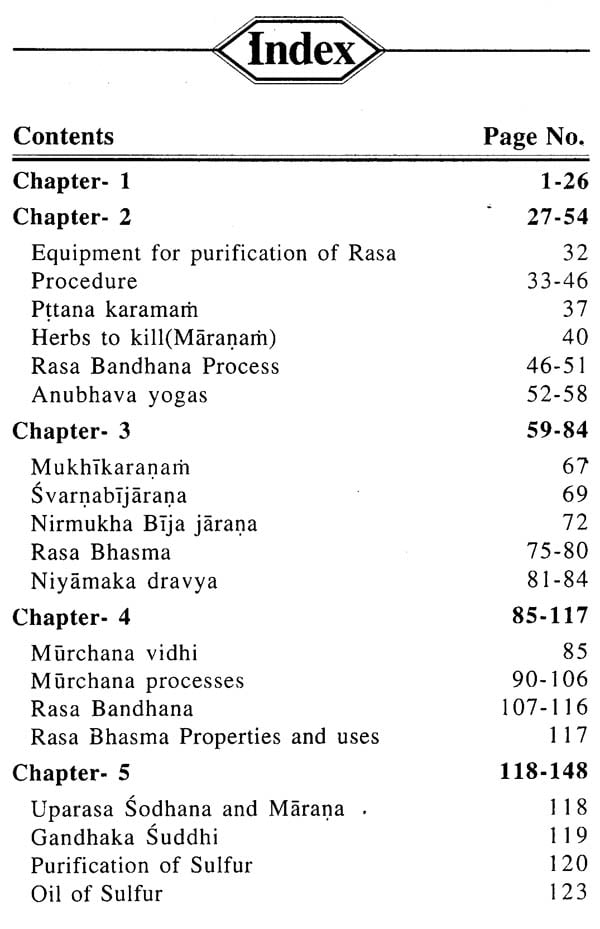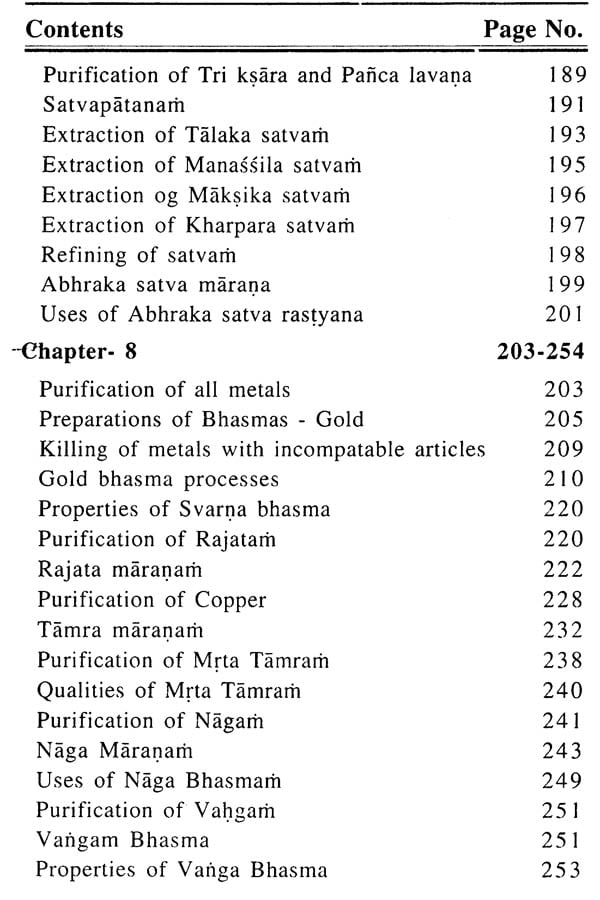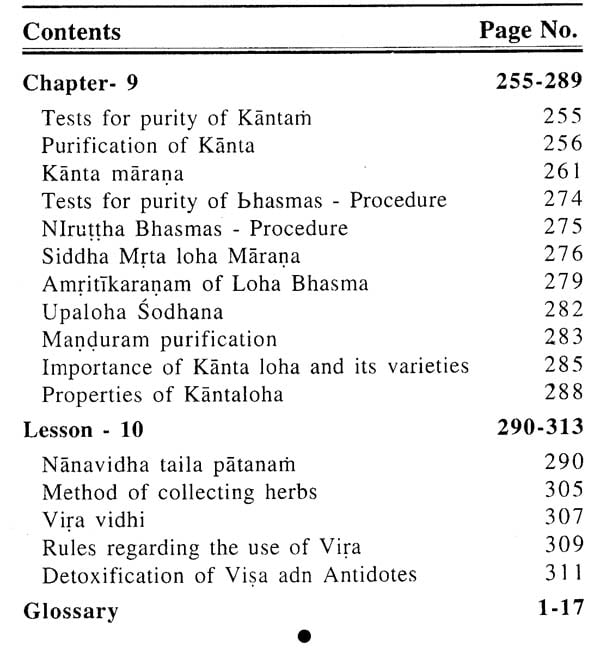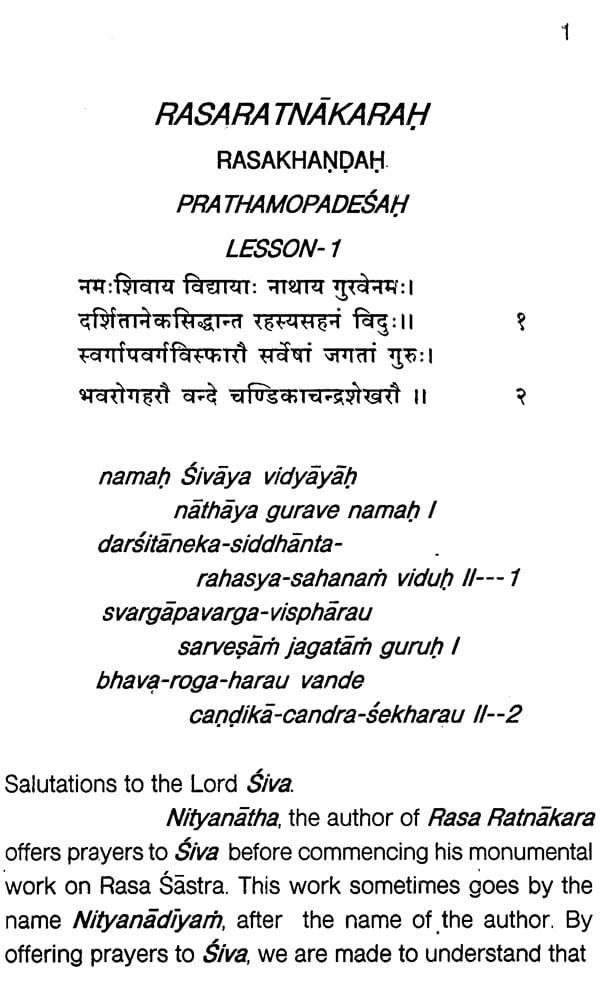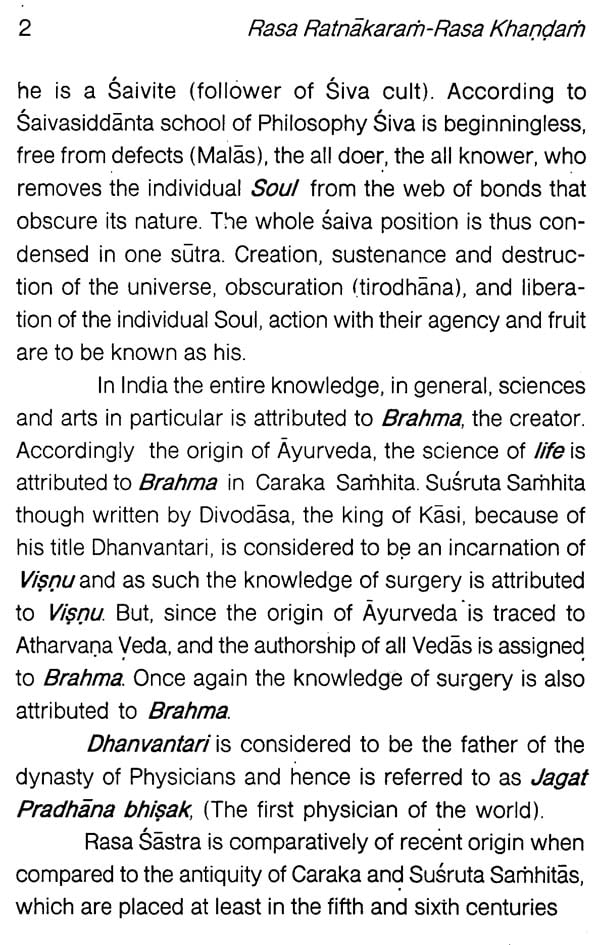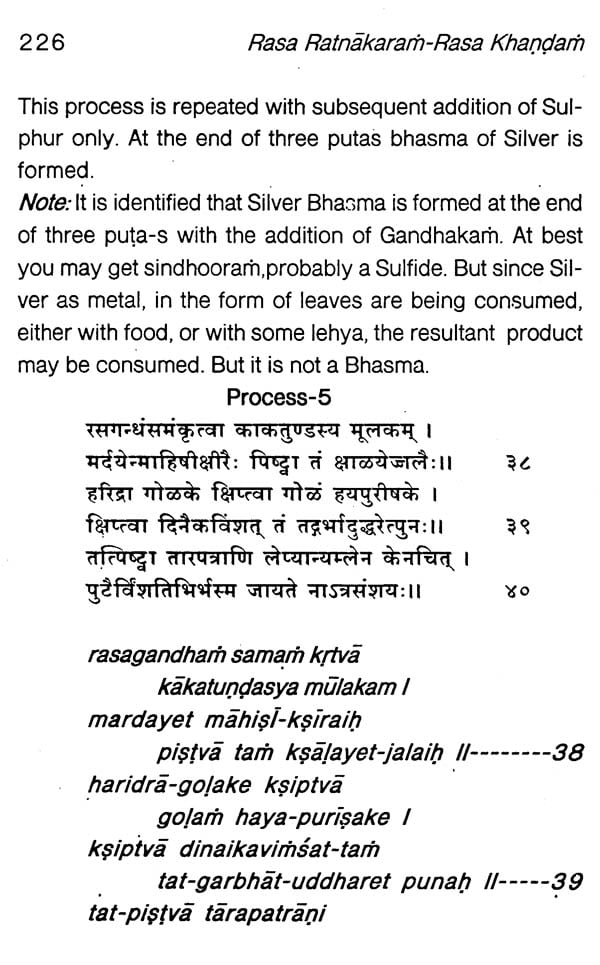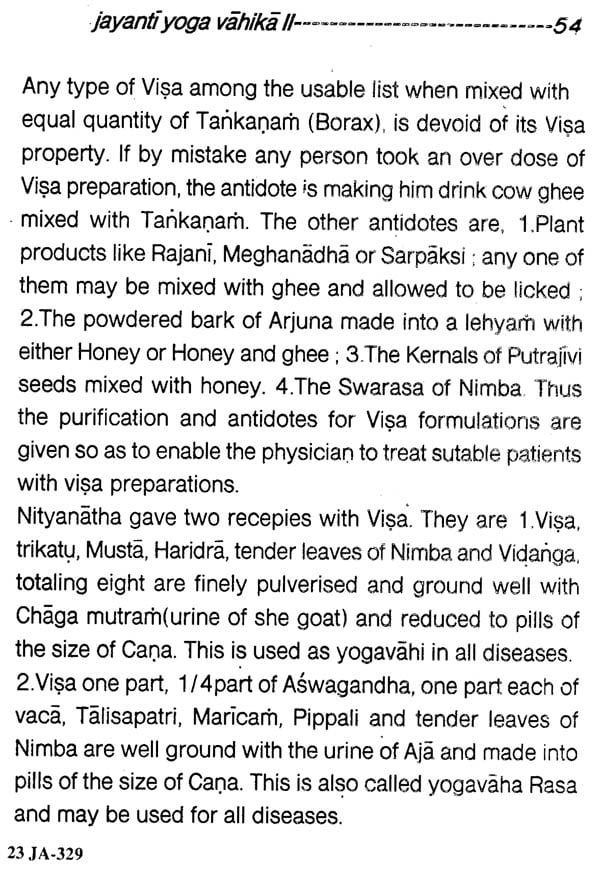
Rasa-Ratnakaram Rasa Khandam
Book Specification
| Item Code: | NAV001 |
| Author: | Vaidya Nagaratnam Atturu and Dr. Gnaneswar Atturu |
| Publisher: | CHAUKHAMBHA ORIENTALIA, Varanasi |
| Language: | Sanskrit Text with English Translation |
| Edition: | 2017 |
| ISBN: | 9788176373876 |
| Pages: | 330 |
| Cover: | PAPERBACK |
| Other Details | 7.00 X 5.00 inch |
| Weight | 230 gm |
Book Description
The original Rasa Ratnakaram is attributeed to Siddha Nagarjuna, the propegator of Mahayana Buddhism in India. He is said to have redacted Suérta sarhita. Many authors on Rasa Sastra quoted him, but his original text is not traced even for to-day. "He is reported to have died at SriSailarn about the beginning of the Christian era as deter- mined by the Tibetan manuscripts vide epiegraphica Indica 1915 Page 92. Nagarjuna appears to have lived a greater part of his life in the Telugu country. Nagarjuna konda is a place popularly associated with his name to these days at Amaravati on the banks of the Krishna River, about 8 miles from Guntur of Andhra Pradesh. This was the capital of the early Andhra Kings and was also the seat of "Dhanya kataka" a famous university".
The present work Rasa Ratnakaram is written by Nityanatha. It is presumed that he lived in Sri Sailam of Andhra Pradesh; some time before 14" century and wrote this work. It is not possible to give the accurate details of his life.
I feel immense pleasure to write foreword for the great treasure of Rasa Shastra i.e. Rasaratnakara written by Shri Nityanatha. The manuscript was written about 13" Century in Sanskrit language. The book is further edited and commented by Dr.A.Nagaratnam and Dr. A. Gnaneswar who belongs to South India and at present residing in Nellore Dt., Andhrapradesh Sishya Parampara of Nagarjuna and as a token of his respect to Nagarjuna he might have opted to call his work ‘Rasaratnakara’. It is also known as Nityanatheyam. It 18 the most popular medical treatise that is used extensively by Vaidyas in Andhra until Vaidya Cintamani and Basava Rajiyam are published.
It has five parts (Khanda) 1.e. Rasakhanda, Rasendrakhanda, Vadikhanda, Rasayankhanda and Mantrakhanda, the subject matter of all except vadikhanda and mantrakhanda belongs to Ayurveda. Rasa ratnakar is a later work to Rasa ratnasamucchaya since it 1s referred by Nityanatha. As there are some Unani terms in this work, it appears that unani system prevailed at that time. This reveals that the period of the author might be after 13" century. The work contains many alchemical formulations. Hence it indicates that alchemy must have been well established by that time. Many works like Dhaturatnamala, Suvarnatantra, Kakacandisvaratantra, Rasacintamanl, etc. have been brought out by then. This was the golden age of the alchemy. The iron pillor near Kutub minar in Delhi was built about this time. The reference of lohadruti (procedure of preserving gold, silver etc. in liquid form) and the power of Mercury to absorb gold indicate that the development of alchemy has reached its peak by that time.
The tantric knowledge, hand and hand with the alchemic knowledge, set man on his quest for minerals like mercury, sulphur, and their processing, which leads to a wealth of scientific knowledge.
I feel honoured in writing this Foreword on a monumental work i.e. English commentary of Rasaratnakara by Dr.A.Nagaratnam and ‘Dr. A. Gnaneswar. I wish, this work will definitely gain popularity among those interested in Ayurveda and specially Rasa Shastra.
I congratulate Dr.A.Nagaratnam and Dr. A.Gnaneswar for bringing out this volume of Rasaratna-kara by editing : and commenting in English language for the benefit of Ayurvedic community. I wish them long and healthy life.
Rasa ratnakararn of Nityanatha is unique among all other treatises on Rasa sastra, in that, he followed a scientific division of the subject. Before him and after him all authors mixed wrote treatises on Rasa Sastra with Kasavada (Alchemy) and Mantra sastra. Nityanatha's classification of the subscript into five distinct parts viz; Rasa khandarn ~ Rasendra khandam - Rasayana khandam-Mantra khndam and vada khandam, interested me to write an English commentary.
Further Nitynatha claimed to have read all the then available treatises on Ayurveda, Rasa Sastra and Mantra §astra. According to him he has practically verified the method of preparation and their uses of many formulae. He found that many recipies in Rasa sastra works are ambiguous in many respects and hence he omitted such things in his work. Further he underwent practical training under an able Guru, and finally he recorded his experiences for the benefit of the future generations.
I had the opportunity to learn Rasa sastra under the guidnace of Hakim Gulam Musthapha, Nalgonda District, now in Telangana state. Through him only I am able to learn many important technical details in Rasa preparations, like "Jarana" and many Bandhana processes. Unfor- tunately, even though he lived with me for eight years, I could gain only a part of his knowledge. Before I could learn many more technical details, he died of heart attack, in my house only. I am indebted to him for my knowledge in Rasa sastra and hence I have dedicated this book to him.
Ancient Indian culture and heritage is well documented in different works written in Sanskrit. It has seen the zenith of development in many sciences and arts which the modern scientist is yet to reach. Parallel to its development, Philosophy took hold of the minds of even a com- mon man that it has become a part and parcel of his daily life. Indian literature, either on sciences or on arts will invariably merge with Philosophy at one stage or other. Indian medicine is no exception in this respect.
It is no hyperboly if it is said that medical knowledge in ancient India developed as a life science on account of Philosophy only. Being Indians we believe in Karma-siddanta (the law of retribution) and the process of reincarnation. Man is said to be a spark of the divine light, which, by the action of Karma is embodied in different bodies and the human body is the culmination of Biological evolution. That spark of divinity struggles through in- numerable incarnations and ultimately, exhausting all types of Karma, merges with the divine light and that is called Moksa or Eternal bliss.
In order to round out the theme, mention may be made of the fact that the same idea, stressing freedom from re-birth and union with the Supreme, occurs in the Brahmanical scriptures. The terms usually employed in the Upanisads, the laws of Manu and the Mahabharata (of which the Bhagavad-Gita is an episode) are Moksa or Mukti and Jivanmukta. yet the Bhagavad-Gta uses the word Nirvana (in the original Sanskrit), for chapter two closes with this verse’.
Yea! whoso, shaking off the yoke of flesh
Lives lord, not servant, of his lusts; set free
From pride, from passion, from the sin of self,
Toucheth tranquility! O Pritha’s son!
That is the state of Brahm! Therc rests no dread
When that last step is reached! Live where he will,
Die when he may, such passeth from all plaining,
To blest Nirvana, with the Gods, attaining.
"Sir Edwin Arnolds The Song celestial"’.
The terms Moksa and Mukti signify freedom, for the root meanings of both words (moksa and mukti) mean to free, to emancipate; hence freedom, emancipation. Jivanmukta is translated (in dictionaries) as release from wordly existence or transmigrations; final or eternal emancipation, since a literal translation of the Sanskrit compound (Jivanmukta) is while living freed, the root meaning of Jiv is to live’.
Karma has been described as the law of ethical causation, or the law of cause and effect. It should be borne in mind, however, that the essential meaning of the Sanskrit word is action, for Karman is derived from the verbal root "kr' meaning to do, to act. When an action is performed asequence of events is bound to occur depending upon the kind of action and the force with which the action was performed. Likewise the reaction or effect, is governed by the motivating force: if weak, the reaction will be weak; if strong there will be a strong reaction-untill equilibrium is restored and harmony reigns again’.
To get over Karma of the past and not to accumulate new and adverse Karma in different re-births, Philosophy suggested a method and that is to extend our life span in this birth as humanbeings. Our life 1s a Cyclic process between birth, death and rebirth. If the span between birth and death is extended (i.e) if longevity is extended upto the end of this Yuga, atleast, it means that to some extent one has cut short his reincarnations.
**Contents and Sample Pages**
